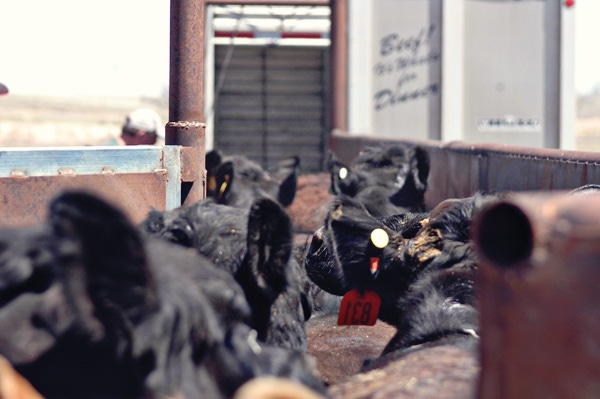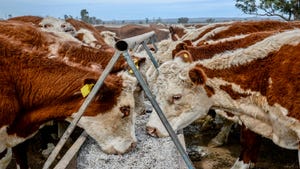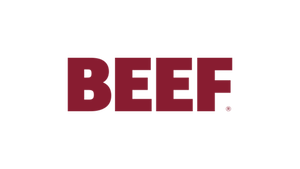Fed cattle and wholesale beef lead price decline
Bearish fundamentals, including growing total red meat and poultry supplies, worsening feedlot economics, and the reported backlog of ultra-heavy cattle, continue to weigh on cattle prices.
September 25, 2015

Increasingly bearish fundamentals this week continued to compound expected seasonal pressures and shove prices lower for all classes of cattle.
Yearling feeders traded $5-$10 per cwt lower with instances of $15 lower, according to the Agricultural Marketing Service (AMS). Calves sold mostly $5-$15 lower with instances of $20 lower in the Midwest and Southeast.
Fed cattle prices offered no support, diving another $6-$7 per cwt lower during the week on a live basis at $125-$130 per cwt. Dressed trade was $7-$11 lower at $203.
“Fed cattle prices have declined about $24 per cwt on a live basis and $36 per cwt on a dressed basis the past six weeks, which translates into revenues of more than $300 less per head than they were in the middle of August,” says Andrew P. Griffith, agricultural economist the University of Tennessee, in his weekly market comments. “Reason and logic in a normal year would indicate prices are near the bottom, but the market could continue to act contra-seasonally and dip further. If this is the bottom, then the average upswing would be expected to be about 13%, which would have live cattle trading near $145 late in the year. However, the large number of heavy cattle on feed is expected to put a damper on such a positive price swing.”
Cattle futures trade limit-down and limit-up
Cattle futures offered a brief glimmer of hope on Monday—buoyed by fewer feedlot placements in August than many anticipated—but caved in mostly limit-down on Wednesday, with sharp losses again on Thursday. Courtesy of a limit-up move in most Live Cattle and Feeder Cattle contracts on Friday, the week-to-week levels masked the volatility of the ride.
Except for $2.01 higher in expiring Sep and $1.77 higher in Oct, Feeder Cattle futures closed an average of $2.17 lower week to week.
Live Cattle future closed an average of $2.19 lower across the board week to week ($1.37 to $3.97 lower).
Though packer margins are reportedly positive, wholesale beef values continue to tumble.
Choice boxed beef cutout value was $14.07 per cwt lower week to week at $212.23. Select was $9.46 lower at $209.80.

70 photos show ranchers hard at work on the farm
Readers have submitted photos of hard-working ranchers caring for their livestock and being stewards of the land. See reader favorite photos here.
Increasing meat supplies weigh on the market
Sources for current market pressure are many, including growing total red meat and poultry supplies, worsening feedlot economics, and the reported backlog of ultra-heavy cattle.
Frozen beef supplies at the end of August were 36% higher year-to-year (2% more month-to-month) according to USDA’s monthly Cold Storage report issued this week.
Frozen pork supplies are 21% more year-to-year (4% more month-to-month).
Total red meat supplies in cold storage are 26% more year-over-year. Frozen chicken stocks are 25% more than the previous year.
Burgeoning meat supplies and continued export challenges magnify the influence of beef carcass weights (see “Lower placements won’t solve fed cattle price erosion” below).
All of that is to say that cattle feeders are drowning in red ink on a cash-to-cash basis.
In fact, Glynn Tonsor, agricultural economist at Kansas State University (KSU), said at this week’s KSU Beef Stocker conference that he projects the rolling 12-month average net return to be minus $211 per head in February (basis fed steer; Kansas feedyards). Previously, the worst monthly average loss on that basis was minus $193 per head in July of 2013.
For cow-calf producers, peering into the near future, Griffith explains prices commonly enjoy a shallow increase following the initial price downturn in the fall.
“However, the small turnaround is usually short lived and the market generally returns to its downtrend in October,” Griffith says. “Given the current market situation, downside risk is becoming much smaller since the market has already priced in a tremendous decline. Calf prices and slaughter cow prices probably have the most downside risk relative to feeder cattle. However, the only way feeder cattle prices will find support will be when the fed cattle market witnesses some clearing action. It will take feedlots moving lots of heavy cattle before the feeder cattle market finds a spark.”
You might also like:
15 photos showcase hardworking American ranchers
Genetic accident produces White Angus
What's the best time to castrate calves? Vets agree the earlier the better
About the Author(s)
You May Also Like





